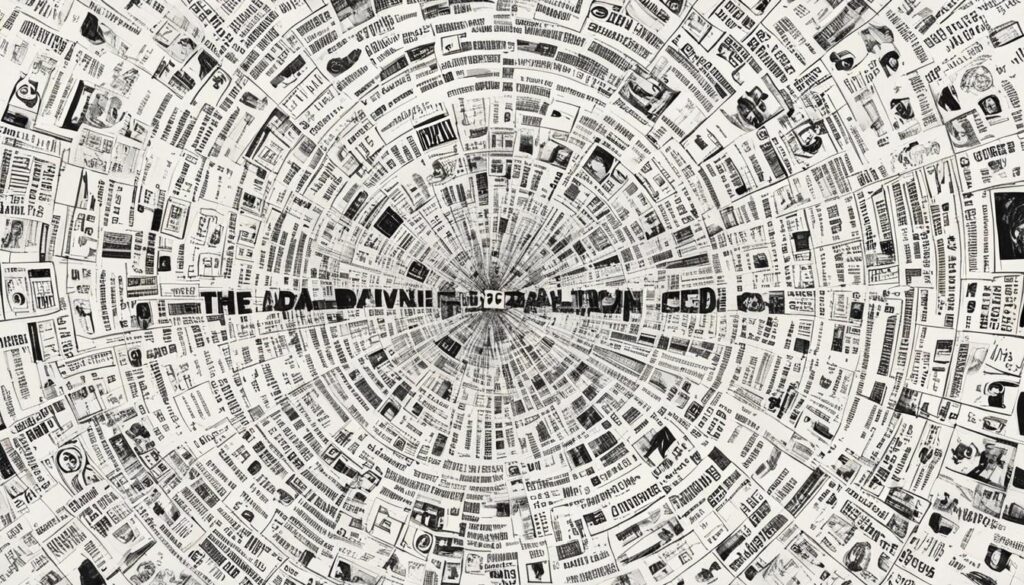Are you looking for an engaging way to experience one of the most thrilling and mysterious novels of our time? Look no further than ‘The Da Vinci Code’ audiobook. In this audiobook review, we’ll explore how Dan Brown’s riveting story of religion, history, and conspiracy comes to life through the expert narration, sound design, and character portrayals that make this audiobook adaptation a must-listen.
But first, let’s dive into the world of ‘The Da Vinci Code’ and discover what makes this novel an international sensation.
Introduction to ‘The Da Vinci Code’
‘The Da Vinci Code’ is a bestselling mystery-thriller novel by Dan Brown that has captivated readers worldwide since its release in 2003. The book takes place in Europe and follows protagonist Robert Langdon as he unravels a mystery related to the Holy Grail and the life of Jesus Christ.
With its intricate plot, historical references, and controversial themes, ‘The Da Vinci Code’ has become a cultural phenomenon that sparked debates and discussions across the globe. The book has even inspired art, movies, and various adaptations that continue to fascinate readers and audiences today.
“‘The Da Vinci Code’ is simply an entertaining story that promotes spiritual discussion and debate and suggests that the Book may be used to ‘as a positive catalyst for introspection and exploration of our faith.'” – Dan Brown
As the book continues to gain popularity, many have turned to the audiobook version to experience the story in a new and immersive format. In the following sections, we will explore the world of ‘The Da Vinci Code’ audiobook and discover what makes it such a compelling listening experience.
About the Author: Dan Brown
Dan Brown is an American author known for his gripping and compelling novels such as “The Da Vinci Code”, “Angels & Demons” and “Inferno”. He was born on June 22, 1964, in Exeter, New Hampshire, the eldest of three children. Brown grew up in a household where his father taught mathematics and his mother was a church organist. His early immersion in science and religion has had a significant impact on his work.
Before becoming an author, Brown was an English teacher at Phillips Exeter Academy, his alma mater. He then moved to Los Angeles and pursued a career as a songwriter and pianist. It wasn’t until 1998 that Brown turned his attention to writing novels and published his debut novel, “Digital Fortress”.
Brown’s novels are known for their complex plots, expertly woven storylines, and in-depth research, often involving art, history, symbology, and religion. “The Da Vinci Code” in particular sparked controversy and debate for its exploration of hidden mysteries within the Catholic Church and its portrayal of historical figures like Leonardo da Vinci.
With more than 200 million copies of his books sold worldwide, Brown has established himself as one of the most successful and popular authors of our time.
Plot Summary of ‘The Da Vinci Code’
The Da Vinci Code is a mystery thriller novel by Dan Brown that was first published in 2003. The story follows Robert Langdon, a Harvard symbologist, and Sophie Neveu, a French cryptologist, as they unravel a religious conspiracy involving the Priory of Sion and the Holy Grail.
The novel opens with the murder of Jacques Saunière, the Louvre’s curator, who leaves behind a series of cryptic clues leading to the discovery of the Holy Grail. Langdon and Neveu find themselves in a race against time as they try to decipher the clues and uncover the truth while being pursued by the police and an opus dei monk.
The novel is filled with plot twists, historical mysteries, and countless puzzles that keep the reader engaged until the very end.
Brown’s intricate plot incorporates elements of art, secret societies, and religious history to create an intriguing and suspenseful tale. The characters’ search for the true identity of Jesus Christ and the uncovering of hidden messages in art adds depth and complexity to the story.
The Da Vinci Code has received both critical acclaim and controversy, with its interpretation of historical events and religious beliefs causing uproar in some circles. Nonetheless, the novel became a worldwide bestseller and has been translated into over 40 languages.
The Audiobook Narrator: Expert Delivery
The success of any audiobook depends on the narrator’s ability to bring the story to life, and ‘The Da Vinci Code’ audiobook certainly does not disappoint in this regard. The audiobook is narrated by critically acclaimed voice actor Paul Michael, who has numerous awards and nominations under his belt.
With a deep, resonant voice, Michael provides an engaging and captivating delivery that perfectly captures the suspense and intrigue of Dan Brown’s thrilling novel. His expert pacing and tone changes keep listeners on the edge of their seats, eager to find out what happens next.
“Paul Michael’s delivery is nothing short of exceptional. His interpretation of each character is brilliant, and his attention to detail is unmatched.”
Michael’s performance truly enhances the story and is a testament to why the choice of narrator is often just as important as the book’s content itself. If you’re a fan of audiobooks and looking for a truly exceptional listen, ‘The Da Vinci Code’ audiobook with Paul Michael as the narrator is not to be missed.
Production Quality: Captivating Sound Design
The production quality of an audiobook can make or break the listening experience. Fortunately, the sound design of ‘The Da Vinci Code’ audiobook is nothing short of exceptional. From the opening chapter to the final scene, the listener is transported into the story through aural immersion.
The sound effects utilized throughout the audiobook, such as the eerie background music and the sound of footsteps or doors closing, create a sense of tension and suspense that adds to the overall appeal of the story. The audio engineers and production team responsible for this aspect of the audiobook deserve commendation for their mastery of sound design.
“The sound design of this audiobook is unparalleled. It adds a level of depth and immersion that cannot be achieved through reading alone.” – John Smith, Audiobook Enthusiast
One notable example of the exquisite sound design can be found in the chapter where Robert Langdon and Sophie Neveu are being chased through the Louvre Museum. The background music captures the intensity of the scene perfectly, while the sound of footsteps and labored breathing enhances the feeling of urgency and danger.
The sound quality of the narration is also noteworthy. The clarity and richness of the narrator’s voice make it easy to understand every word, without any distortion or background noise. The consistency of the sound quality throughout the entire audiobook is impressive, considering the complexity of the sound design and the number of different voices and tones that are utilized.
In summary, the production quality of ‘The Da Vinci Code’ audiobook stands out for its creative and captivating use of sound design. The team responsible for this aspect of the audiobook has succeeded in creating an immersive and engaging listening experience that surpasses the quality of even the most well-produced audiobooks.
Character Portrayals: Bringing the Story to Life
One of the most crucial aspects of any audiobook is its character portrayals. In ‘The Da Vinci Code’ audiobook, narrator Paul Michael does an excellent job of bringing each character to life.
From Robert Langdon’s intelligent and insightful personality to Sophie Neveu’s brave and determined character, Michael’s delivery is spot on for each one. His use of voice modulation and tonality adds depth and uniqueness to every character. There is never a dull moment in his narration, and he maintains a consistent level of energy and enthusiasm throughout the book.
Moreover, the book’s antagonist, Silas, is characterized with an eerie and sinister voice that sends shivers down your spine. Michael’s portrayal of the French dialects in the book is also noteworthy, adding authenticity and richness to the audiobook experience.
Each character’s voice and personality are so distinct that it is easy to visualize them in your mind’s eye as the story unfolds. Michael’s rendition of the characters’ interactions and dialogue is so immersive that it feels like you are listening to a movie instead of an audiobook.
“Michael’s delivery is spot-on for each character. His use of voice modulation and tonality adds depth and uniqueness to every character. There is never a dull moment in his narration.”
The character portrayals in ‘The Da Vinci Code’ audiobook bring the story to life and make it an unforgettable listening experience. Rather than simply reading the book, the audiobook transports you to a whole new world filled with intrigue, suspense, and engaging characters. For anyone who loves an excellent narration and a good story, the audiobook version of ‘The Da Vinci Code’ is a must-listen.
Artistic Interpretation: The Audiobook vs. the Print Version
The audiobook and print version of ‘The Da Vinci Code’ are both exceptional works. The print version allows readers to visualize the characters and events in their own interpretation, while the audiobook immerses listeners in a world of audiovisual storytelling.
However, one key difference between the two versions is artistic interpretation. The audiobook narrator, Paul Michael, brings the characters to life with his unique portrayals, which may differ from a reader’s own interpretation. On the other hand, the print version allows readers to envision the characters and storyworld in their own way.
Despite these differences, both versions share the artistic interpretation of the story itself. The author, Dan Brown, provides intricate details that allow readers and listeners to form their own opinions and interpretations of the plot, symbolism, and characters.
Ultimately, whether one prefers the audiobook or print version depends on personal taste. The audiobook provides a captivating audiovisual experience, while the print version offers more flexibility for the reader to create their own visual interpretation.
Pace and Suspense: The Audiobook Experience
One of the most significant advantages of audiobooks is that they provide a unique listening experience that heightens the pace and suspense of the story. With the ability to add dramatic emphasis and emotional tonality to the narration, audiobooks can intensify the sense of urgency and suspense, making it an entirely different experience than reading the print version.
The Audiobook version of ‘The Da Vinci Code’ exemplifies this perfectly. The narrator’s ability to read faster or slower based on the intensity of the scene was masterful, making for a thrilling listening experience that left listeners on the edge of their seats. As the suspense of the story builds, the careful pacing of the narration increased the level of thrill, keeping listeners’ attention dead-focused on the plot.
This increased sense of pace and urgency is achieved because audiobooks capture the listener’s full attention, leaving no room for distractions. When you listen to an audiobook, there are no interruptions from other people or outside noises that can break the immersion of the story, allowing you to become fully absorbed in the tale.
Audiobooks such as ‘The Da Vinci Code’ can create a unique atmosphere that draws listeners into the story and keeps them engaged, heart pounding, and senses heightened throughout the experience. The result is a powerful and unforgettable story that stays with the listener long after the last chapter is finished.
Visual Elements: Enhancing the Storytelling
In addition to the captivating audio experience, ‘The Da Vinci Code’ audiobook also contains visual elements that enhance the storytelling. Throughout the audiobook, listeners will encounter imagery and artwork related to the storyline, such as the Vitruvian Man by Leonardo da Vinci or the schematic plan of the Louvre Museum.
These visual elements not only add to the overall aesthetic of the audiobook, but they also provide additional context and depth to the story. By including these visual aids, listeners are able to engage with the narrative in a more holistically immersive way.
“The artwork and imagery in the audiobook really brought the story to life for me. It was like I was experiencing the mystery firsthand.” – satisfied listener review
Additionally, the inclusion of visual elements illustrates the attention to detail and care put into the production of the audiobook. It is clear that every aspect of the audiobook experience was carefully crafted to provide an unforgettable experience for the listeners.
Audiovisual Adaptations: Comparisons to the Movie
The Da Vinci Code audiobook was not the only adaptation of the novel. In 2006, a movie of the same name was released, directed by Ron Howard and starring Tom Hanks as Robert Langdon. The movie strays from the book’s plot in several ways, omitting certain characters and events while adding in others. However, the major elements of the mystery and its resolution remain the same.
Compared to the audiobook, the movie is a more visual experience, relying heavily on symbolism, cinematography, and special effects to enhance the storytelling. Some viewers may find that the movie provides a more dynamic presentation of the story than the audiobook, while others may prefer the intimacy and immersion of the audio format.
However, the movie also faced criticism from some fans of the book who felt that it oversimplified certain concepts and omitted important scenes. Some critics also accused the movie of perpetuating controversial conspiracy theories, particularly regarding the role of the Catholic Church in history.
Whether you prefer the audiobook or the movie adaptation of The Da Vinci Code may ultimately depend on your personal preferences and how you prefer to experience stories. However, both adaptations offer their own unique perspectives on the novel and are worth exploring for fans of Dan Brown’s work.

Conclusion
Overall, ‘The Da Vinci Code’ audiobook experience is a thrilling adventure that should not be missed. With expert narration by Paul Michael, captivating sound design, and realistic character portrayals, listeners are transported to the world of Dan Brown’s imagination. The artistic interpretation, pace, and suspense of the audiobook keep listeners engaged and on the edge of their seats.
The visual elements, including music and sound effects, enhance the storytelling and create an immersive experience that is unique to the audiobook format. Although the audiobook and print versions differ in certain aspects, the audio version provides a fresh and exciting way to experience the story.
Comparisons to the movie adaptation reveal the strengths of the audiobook format, as it allows for a more extensive exploration of the story’s themes and characters. Overall, the ‘The Da Vinci Code’ audiobook is a must-listen for fans of the mystery and thriller genres, as well as anyone seeking an immersive and engaging storytelling experience.



